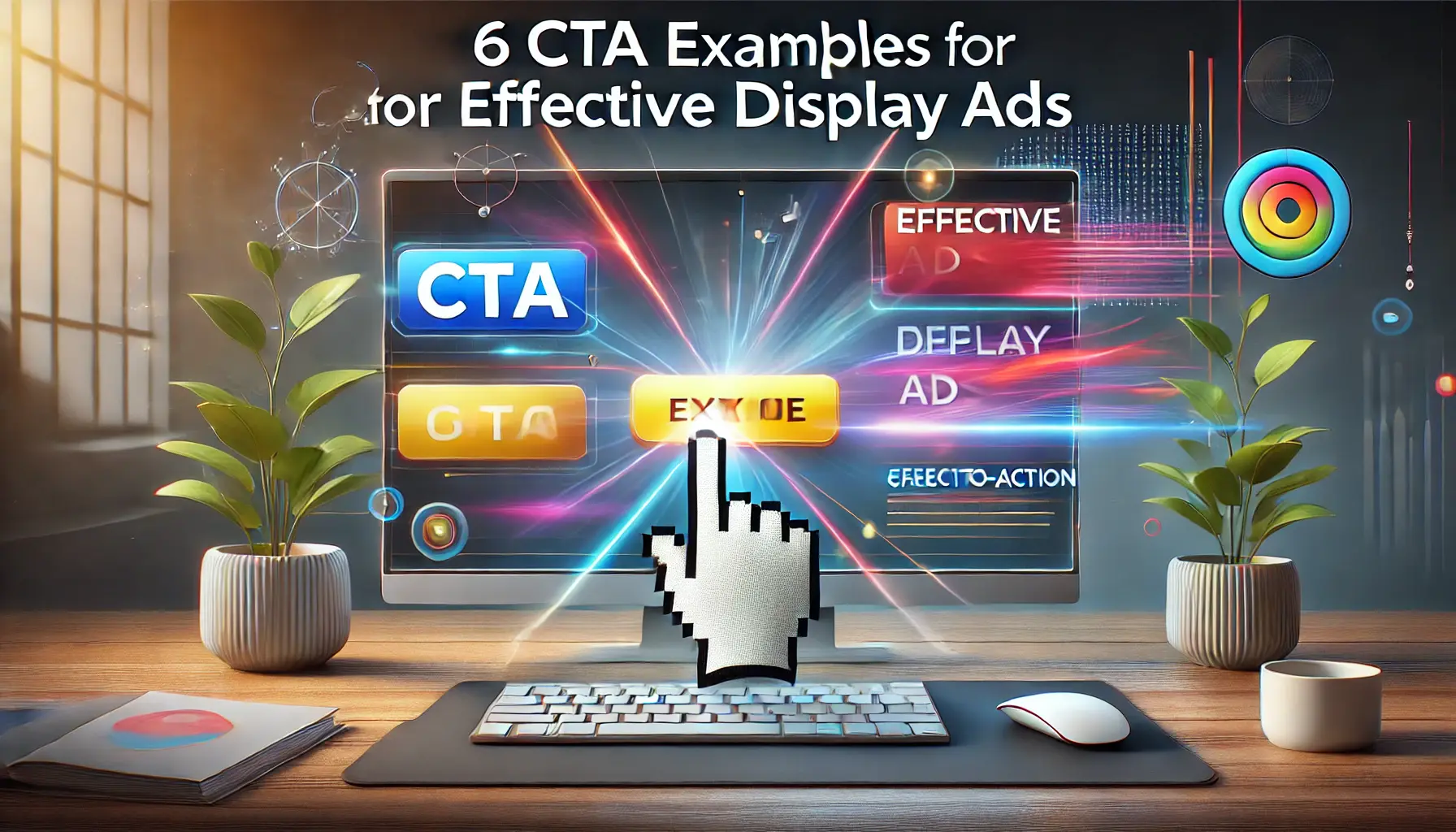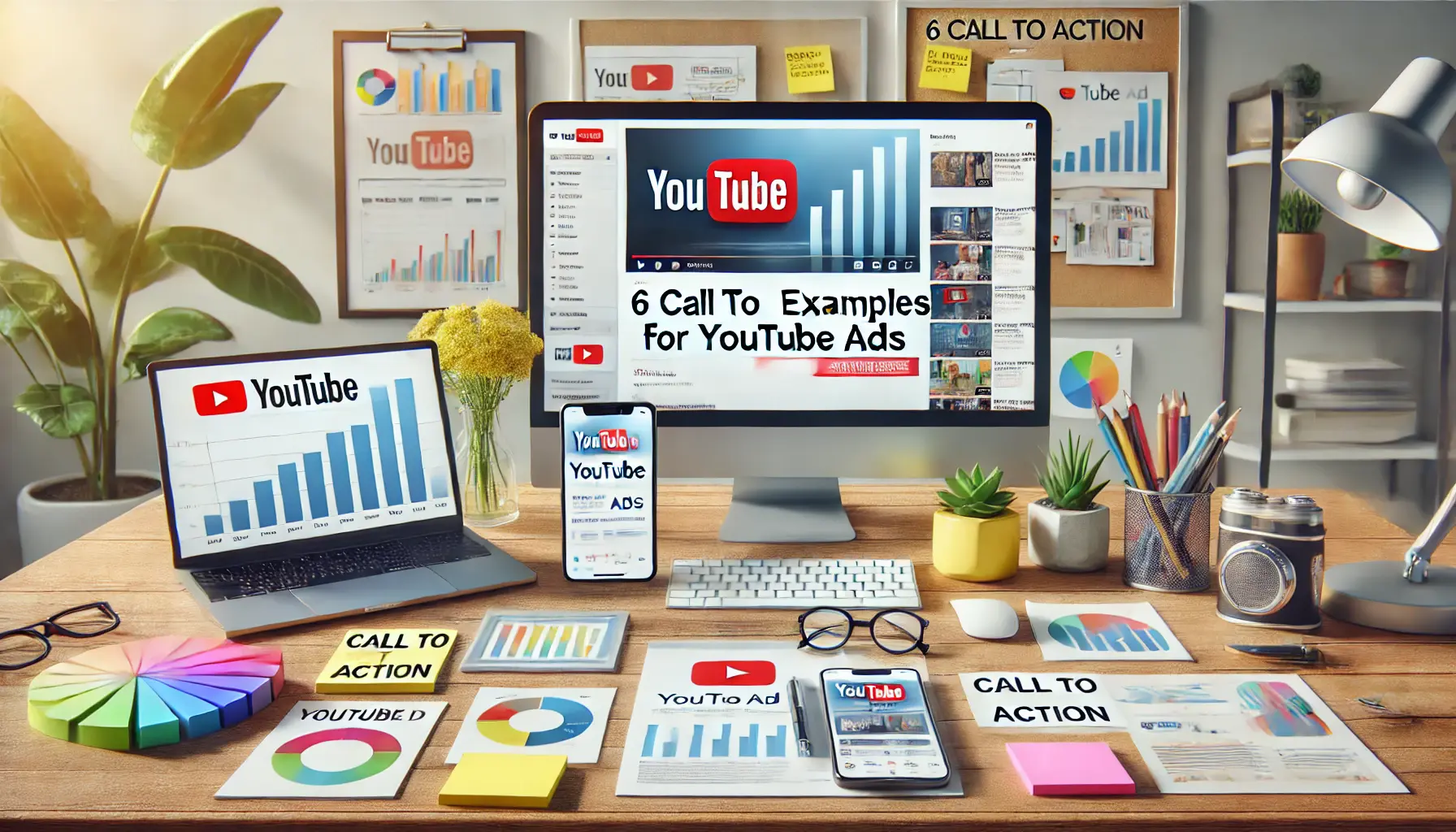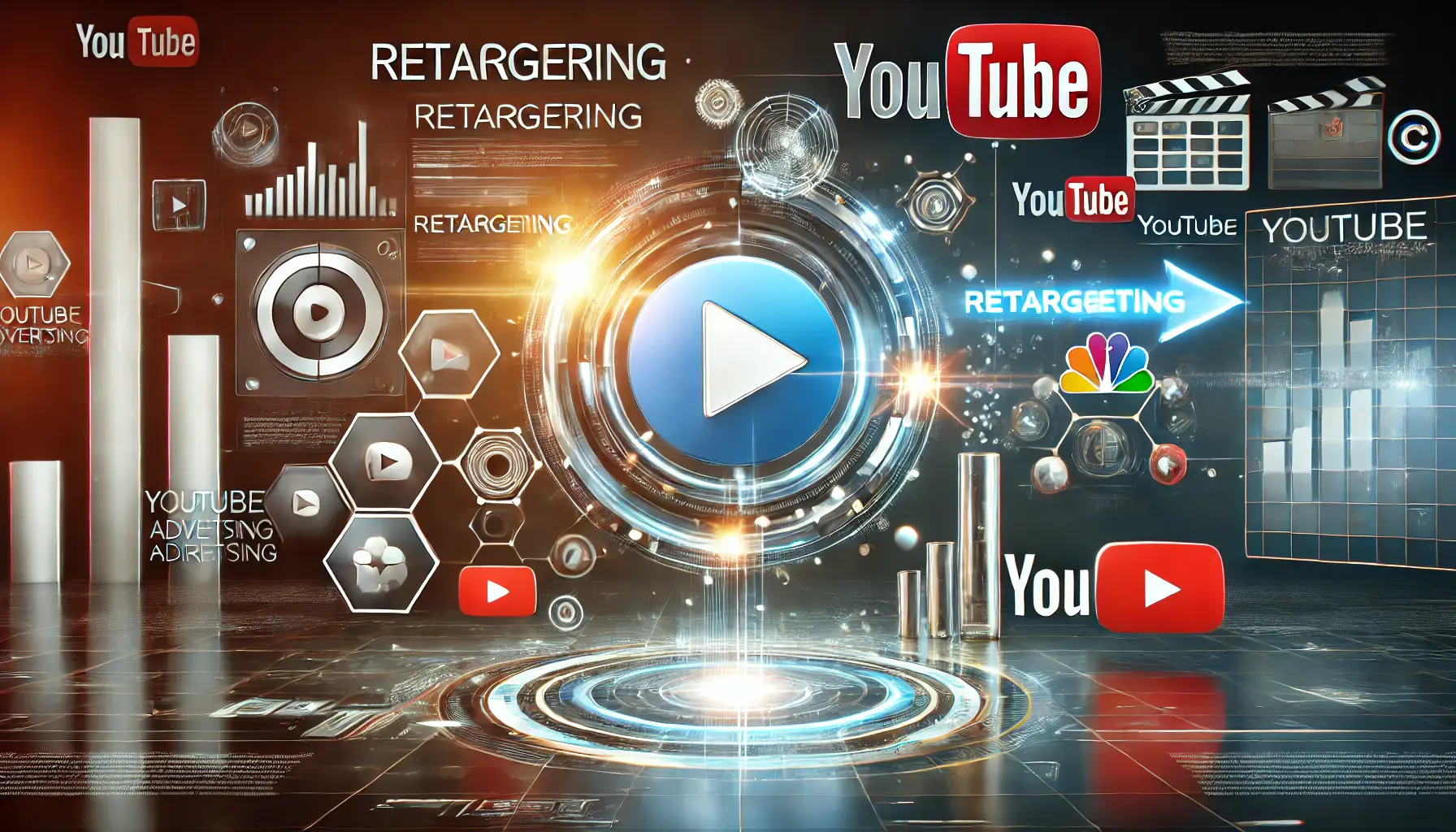Display advertisements in digital marketing have turned out to be very effective for catching customers’ attention, and there’s only one factor that determines whether an ad really does its work, and that’s the CTA.
A well-crafted CTA is more than just a phrase; it’s an invitation that motivates your audience to take the next step, whether that’s clicking a link, making a purchase, or signing up for a newsletter.
In this article, we’ll explore how to create CTAs that drive results, starting with understanding what makes a CTA effective in display ads.
- What Makes a CTA Effective in Display Ads?
- 6 Inspiring CTA Examples to Boost Engagement
- How to Design Attention-Grabbing CTAs
- Common Mistakes to Avoid in CTA Design
- Measuring the Success of Your CTAs in Display Ads
- Key Takeaways for Creating Effective CTAs in Display Ads
- Frequently Asked Questions about Effective CTAs in Display Ads
What Makes a CTA Effective in Display Ads?
Not all CTAs are created equal.
The difference between a successful campaign and a mediocre one often lies in the quality of the CTA.
So, what sets an effective CTA apart?
Let’s break it down into its key elements.

A visual depiction of the essential elements that make a CTA compelling and effective.
Key Elements of a Compelling CTA
A good CTA must be clear and concise, containing an action element.
It has to give the person exactly what they are supposed to do next without ambiguity.
For example, instead of “Learn More,” one might say, “Download Your Free Guide.” Such clarity not only dictates action but also conveys value upfront.
- Clarity: Use simple and direct language without confusing the reader with ambiguity.
- Relevance: Tailor your CTA to match the audience’s needs and expectations.
- Urgency: Create a sense of immediacy with phrases like “Limited Time Offer” or “Sign Up Today.”
- Value Proposition: Highlight what the user will gain by clicking or interacting with the ad.
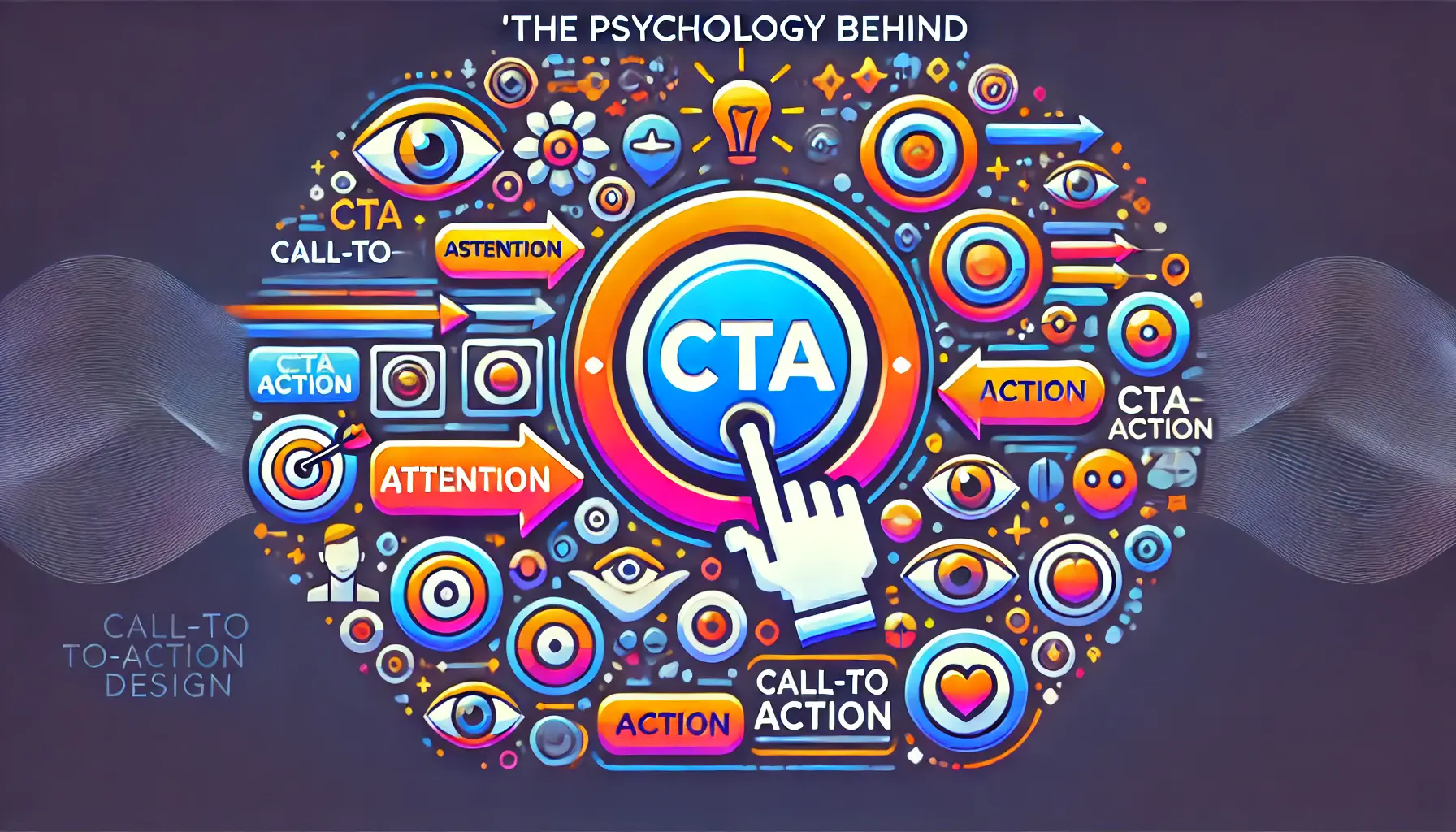
A representation of psychological triggers in CTA design, emphasizing attention and decision-making.
The Psychology Behind CTA Design
A well-crafted call-to-action takes into consideration all the psychological mechanisms that influence the reaction of an individual.
For instance, bright, contrasting colors might attract the eye of the viewer; the use of action verbs like “Get,” “Start,” or “Claim” gives one a sense of empowerment, while placing the call-to-action in a dominant position on the ad will make sure it is not missed by viewers.
- Colors: Choose your brand colors, but ensure they contrast effectively within the ad.
- Placement: Position the CTA in a highly visible area, such as the center or bottom of the ad.
- Emotional Triggers: Use words that evoke emotions like excitement or curiosity.
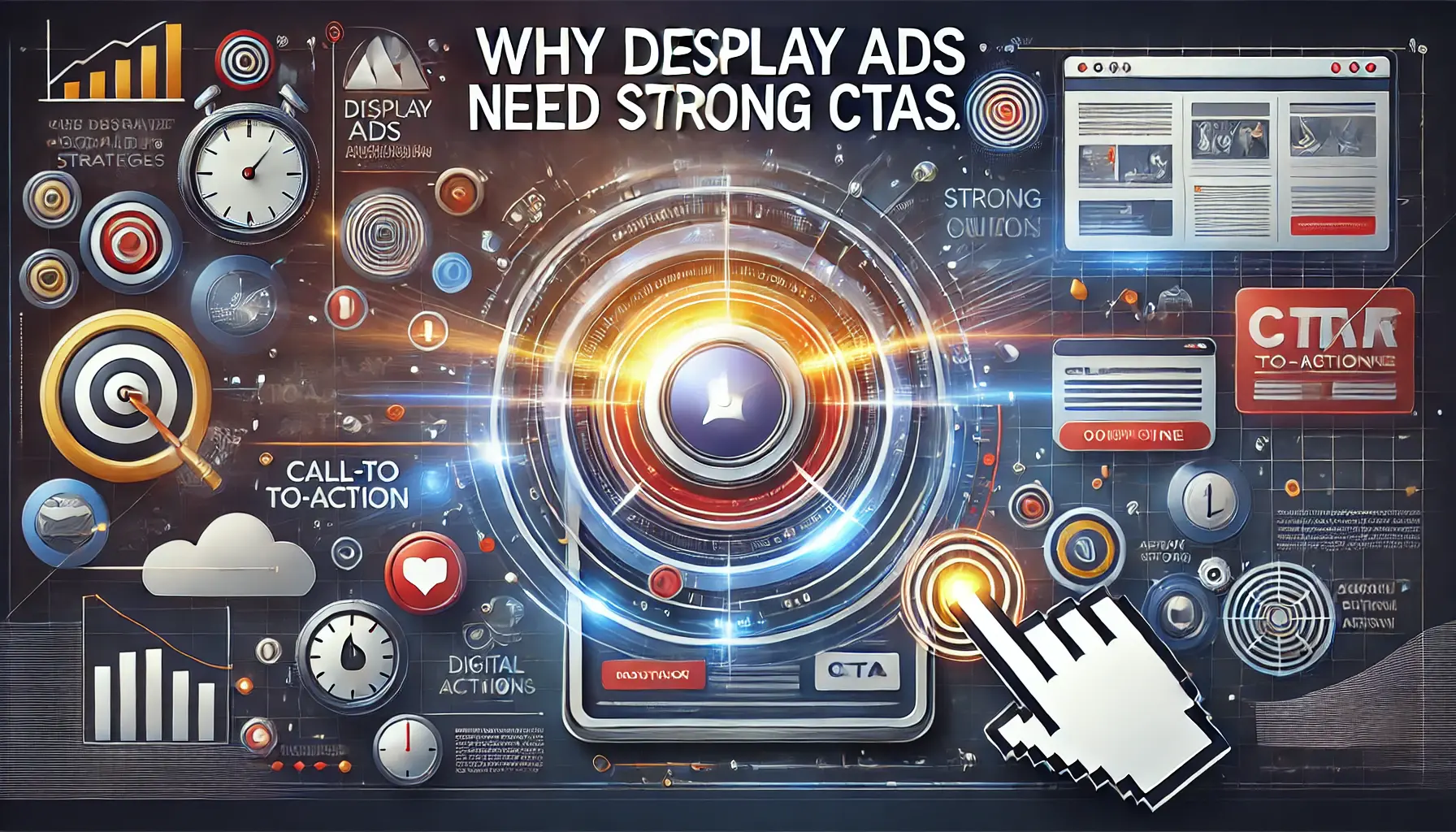
Highlighting the importance of strong CTAs in display ads to drive user engagement.
Why Display Ads Need Strong CTAs
Display ads have been designed to be noticed, but without a great CTA, they are inefficient in converting that attention into action.
A well-framed call-to-action bridges the gap between curiosity and involvement, leading users toward a certain outcome.
Whether it be increasing clicks, boosting conversions, or driving sales, a strong CTA is the linchpin of your strategy.
Knowing the key elements and the underlying psychology will lead to building display ads that not only engage viewers but also compel action.
Next, we go in-depth on six encouraging examples of CTAs that really work in improving engagement.
Effective CTAs stand out by being clear, relevant, urgent, and value-driven. These elements make your ads compelling and actionable.
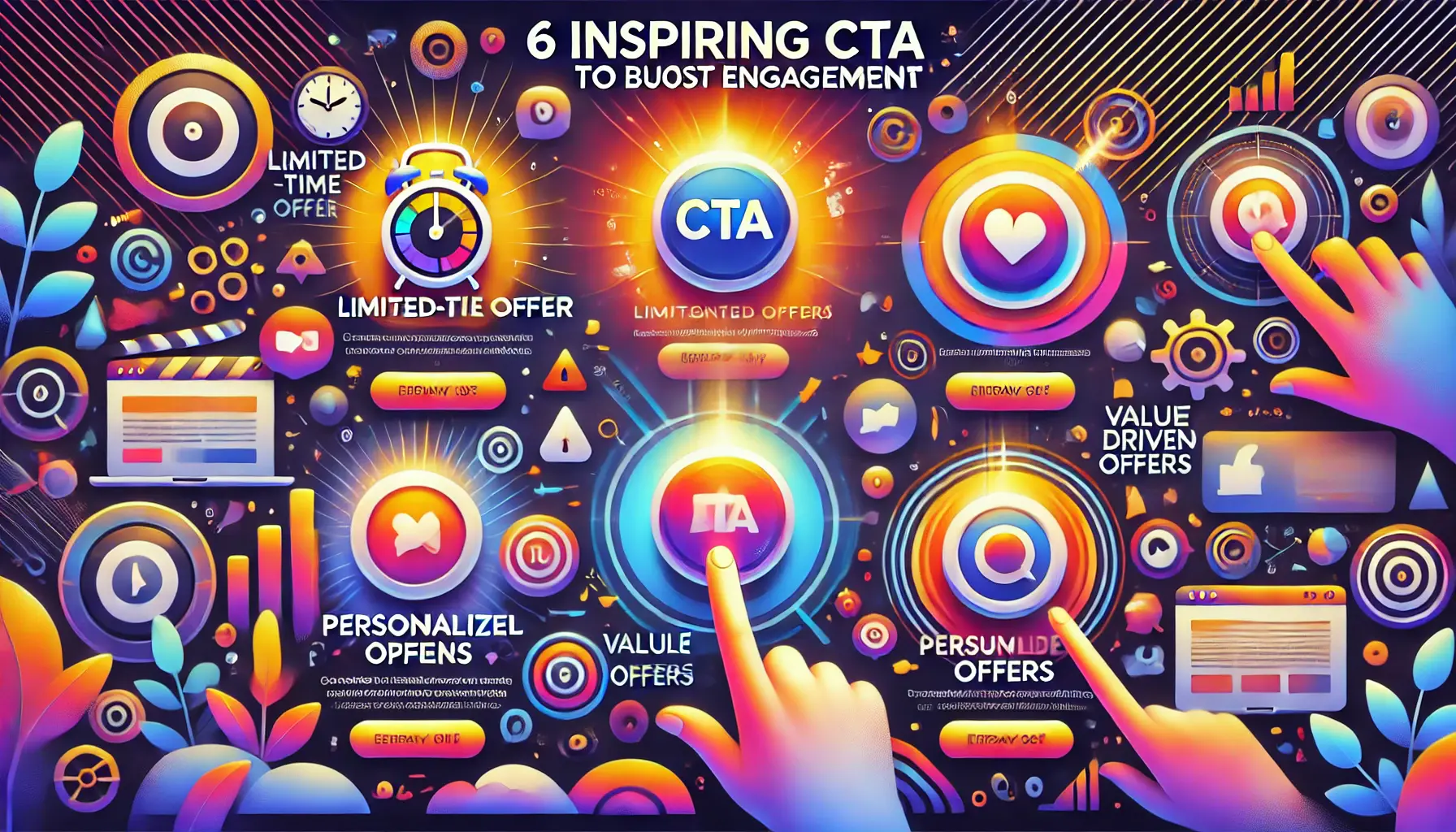
A visual representation of diverse and inspiring CTA examples designed to drive user engagement.
6 Inspiring CTA Examples to Boost Engagement
Creating compelling CTAs in your display ads is crucial for driving user engagement and achieving your marketing goals.
Let’s explore six effective CTA examples that have proven successful in capturing audience attention and prompting action.

A depiction of urgency-focused design for Limited-Time Offer CTAs.
1. Limited-Time Offer CTAs
Creating a sense of urgency can significantly enhance the effectiveness of your CTA.
Phrases like “Shop Now – Sale Ends Tonight” or “Join Now – Limited Spots Available” encourage immediate action by leveraging the fear of missing out (FOMOFear of Missing Out, a psychological trigger that encourages immediate action.).
This strategy is particularly effective in time-sensitive promotions, prompting users to act swiftly to take advantage of the offer.

A representation of decisive and engaging design for Action-Oriented CTAs.
2. Action-Oriented CTAs
Using strong, action-oriented verbs can make a CTA more compelling.
For example, “Download Your Free Guide” or “Start Your Free Trial” clearly communicate the action to be taken and are more likely to be followed through by the user.
This direct approach eliminates ambiguity and guides the user toward the desired outcome.

A representation of tailored and user-centric design for Personalized CTAs.
3. Personalized CTAs
Personalization can make your CTA more relevant to the user, increasing the likelihood of engagement.
An example is “Find Your Perfect Fit” for a clothing retailer, which speaks directly to the user’s personal needs and preferences.
Tailoring your CTA to resonate with individual users can create a more personalized experience, fostering a stronger connection with your audience.

A visual representation of urgency-driven design for FOMO CTAs.
4. Fear of Missing Out (FOMO) CTAs
Highlighting exclusivity or scarcity can prompt users to act quickly.
CTAs like “Get Access to Exclusive Content” or “Claim Your Spot Before It’s Gone” appeal to the user’s FOMO, making them want to engage immediately.
This is a strong psychological trigger that works particularly well with time-limited offers.
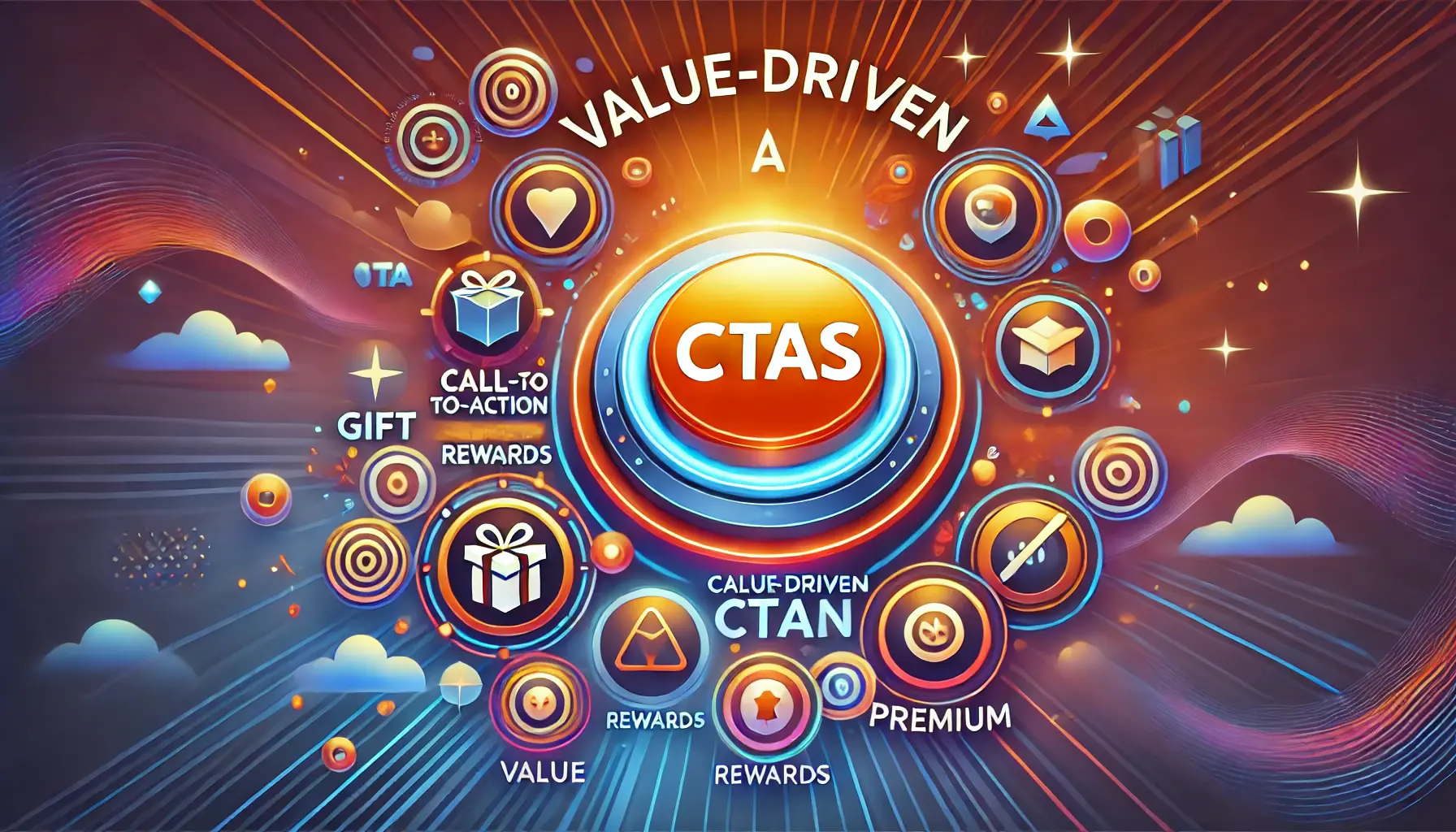
A representation of benefit-focused design for Value-Driven CTAs.
5. Value-Driven CTAs
Emphasizing what the user will gain can make your CTA more appealing.
Examples include “Unlock Premium Features Now” or “Discover the Secrets to Success”; these clearly state the benefits of taking action, appealing to the user’s need for value and self-improvement.
By highlighting the benefits, you provide a compelling reason for users to engage with your ad.
These types of CTAs are highly effective in boosting user engagement and conversions in display ads.
Remember to always design your CTAs with your specific audience and campaign goals in mind.
- Use urgency: ‘Shop Now – Sale Ends Tonight.’
- Personalize: ‘Find Your Perfect Fit.’
- Highlight exclusivity: ‘Claim Your Spot Before It’s Gone.’
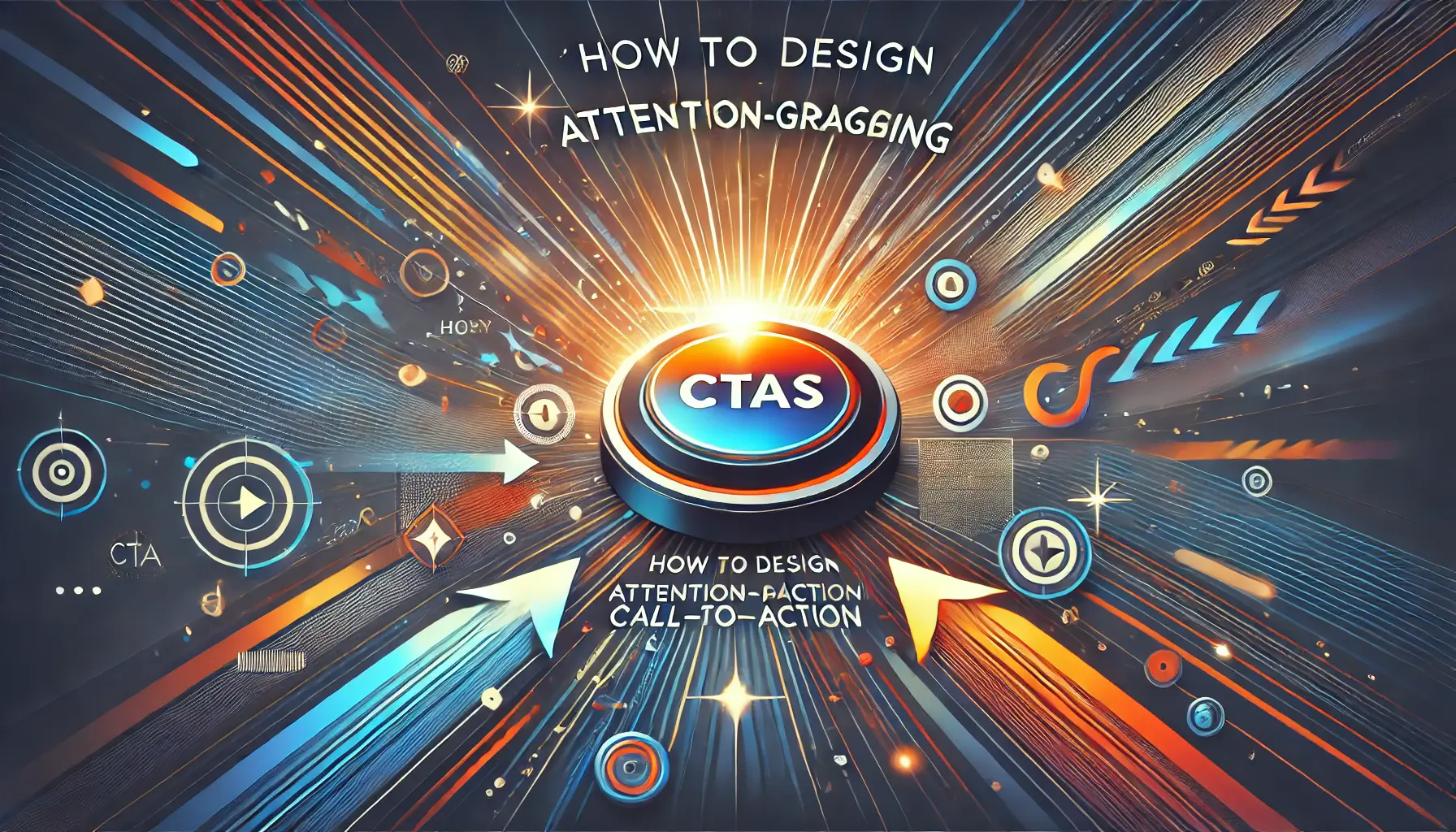
A visual representation of strategies for designing attention-grabbing CTAs.
How to Design Attention-Grabbing CTAs
Designing an effective call-to-action (CTA) is crucial for capturing your audience’s attention and driving engagement.
Let’s explore some best practices to create compelling CTAs for your display ads.

A representation of effective strategies for CTA placement in digital ads.
Best Practices for CTA Placement
Strategic placement of your CTA can significantly impact its effectiveness.
Consider the following tips:
- Above the Fold: Position your CTA where users can see it without scrolling to ensure immediate visibility.
- Logical Flow: Place the CTA in a location that naturally follows the ad’s content, guiding users toward the desired action.
- Repetition: In longer content, include the CTA multiple times to reinforce the message and provide multiple opportunities for engagement.
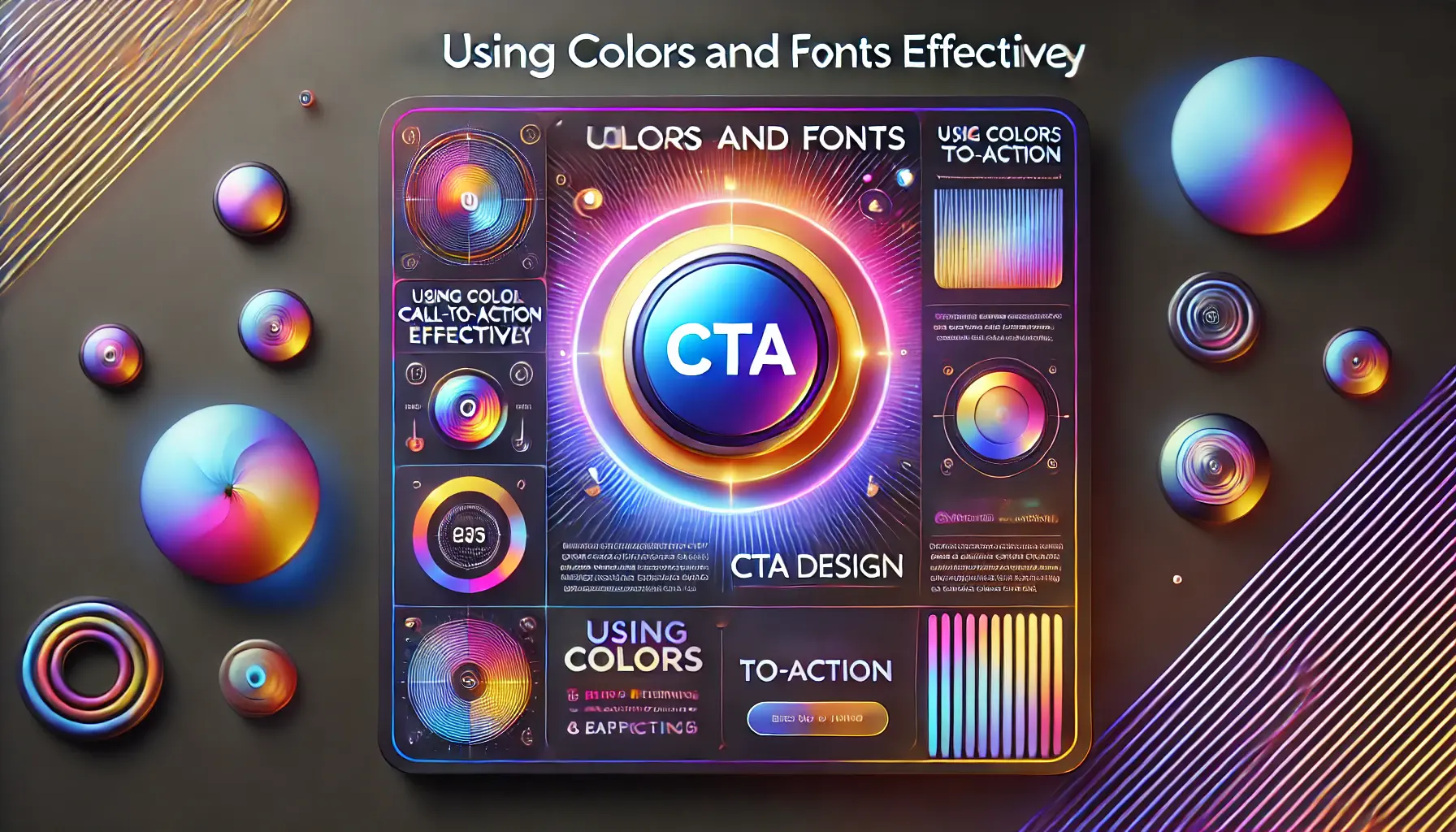
A visual representation of effective use of colors and fonts in CTA design.
Using Colors and Fonts Effectively
The visual design of your CTA plays a vital role in attracting attention.
Here are some design tips:
- Contrast: Use contrasting colors from the ad’s background to make your CTA stand out.
- Brand Consistency: Integrate your brand colors into the design to ensure consistency and recognition.
- Readable Fonts: Use clear, legible fonts and appropriate font sizes to make your CTA easy to read across all devices.
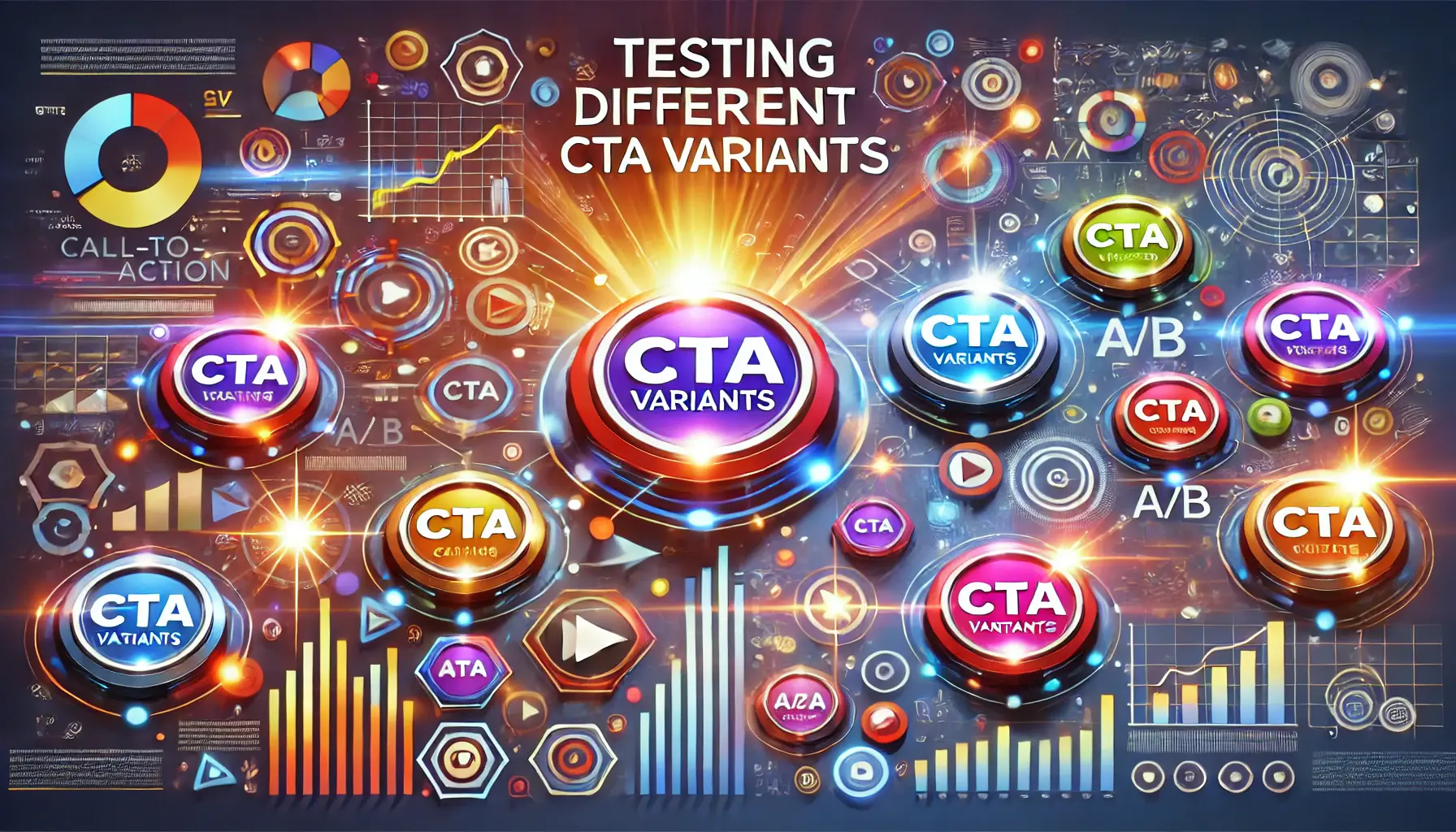
A visual representation of A/B testing strategies for CTA optimization.
Testing Different CTA Variants
Experimenting with various CTA designs can help identify what resonates best with your audience.
Consider the following approaches:
- A/B Testing: Create multiple options for your CTA by varying the text, color, and placement to see which one performs better.
- Analyze Metrics: Track click-through rates and conversions to evaluate the effectiveness of each CTA variant.
- Iterative Improvements: Use insights gained from testing to refine and optimize your CTAs continually.
By implementing these design strategies, you can create attention-grabbing CTAs that enhance user engagement and drive conversions in your display advertising campaigns.
CTAs should be visually striking, positioned prominently, and aligned with the ad’s message to capture attention effectively.

A representation of common pitfalls in CTA design with solutions for improvement.
Common Mistakes to Avoid in CTA Design
Designing effective calls-to-action (CTAs) is crucial for the success of your display ads.
However, certain pitfalls can undermine their effectiveness.
Let’s explore common mistakes in CTA design and how to avoid them.

A depiction of the importance of clear and specific CTA text in digital marketing.
1. Vague or Generic CTA Text
Using unclear language like “Click Here” or “Submit” can confuse potential leads.
Such phrases don’t tell the visitor what will happen next, leaving users unsure about the action to take.
Instead, use specific and descriptive text that clearly communicates the benefit, such as “Download Your Free E-book Now” or “Start Your 30-Day Trial.” This approach provides clarity and entices users to engage.

A demonstration of the importance of clear and visible CTA placement in digital ads.
2. Poor CTA Visibility
A CTA that blends into the background or is placed in a less noticeable area can be easily overlooked.
Ensure your CTA stands out by using contrasting colors and positioning it prominently within the ad.
For instance, placing the CTA above the fold and using a color that contrasts with the background can draw the user’s attention effectively.

A demonstration of the pitfalls of overloading digital ads with multiple CTAs.
3. Overloading with Multiple CTAs
Presenting too many CTAs in a single ad can overwhelm users and lead to decision fatigue.
Focus on one primary call-to-action that guides visitors toward the desired action.
If necessary, include a secondary CTA, but keep it minimal to avoid confusion.
This streamlined approach helps in directing user attention and increasing conversion rates.
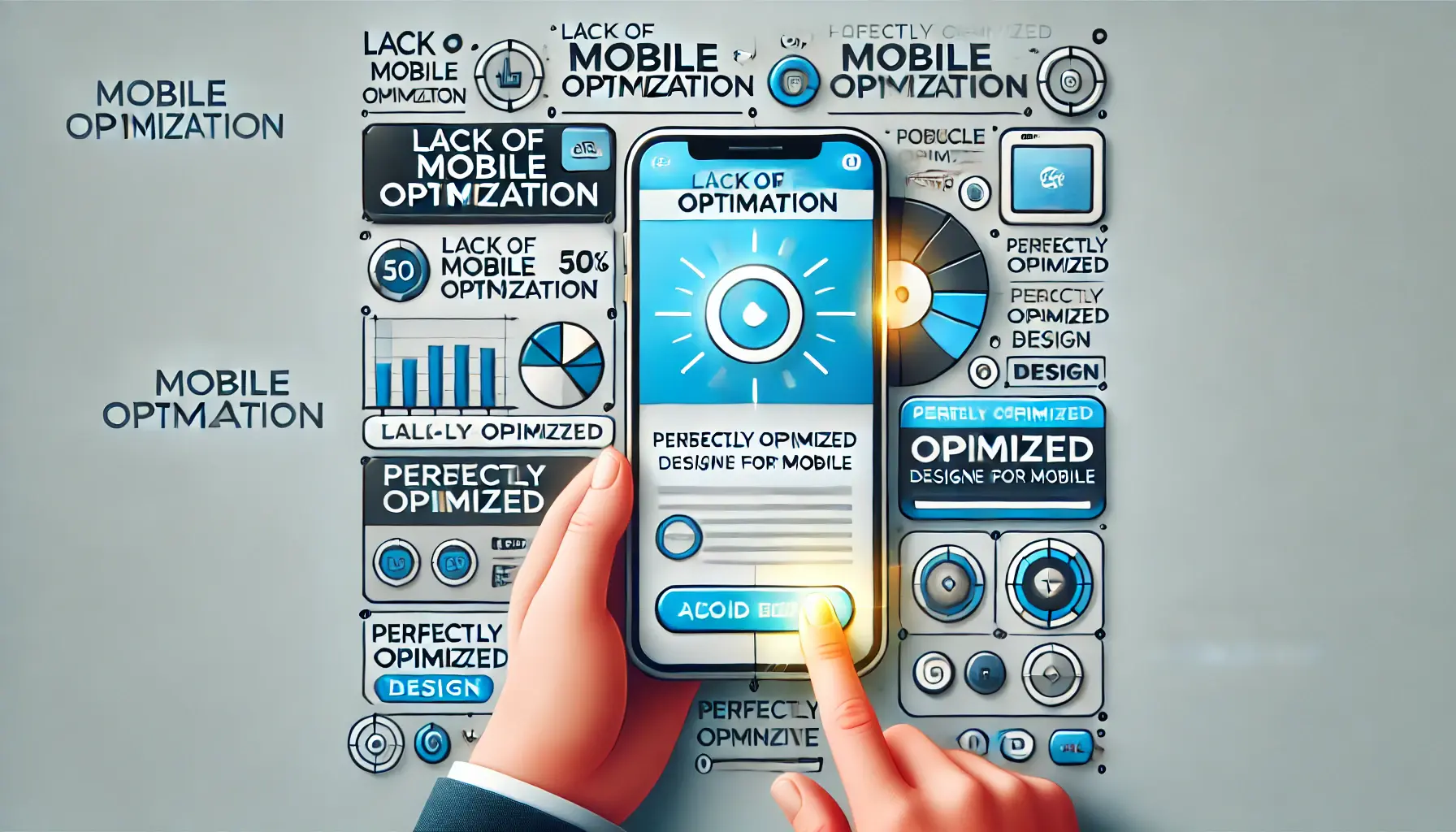
A visual representation of the importance of mobile-friendly design for CTAs.
4. Lack of Mobile Optimization
With the increasing use of mobile devices, neglecting mobile optimization can significantly impact CTA effectiveness.
Ensure your CTAs are mobile-friendly by making buttons large enough to tap easily, using readable fonts, and testing across various devices.
A mobile-optimized CTA enhances user experience and engagement on all platforms.
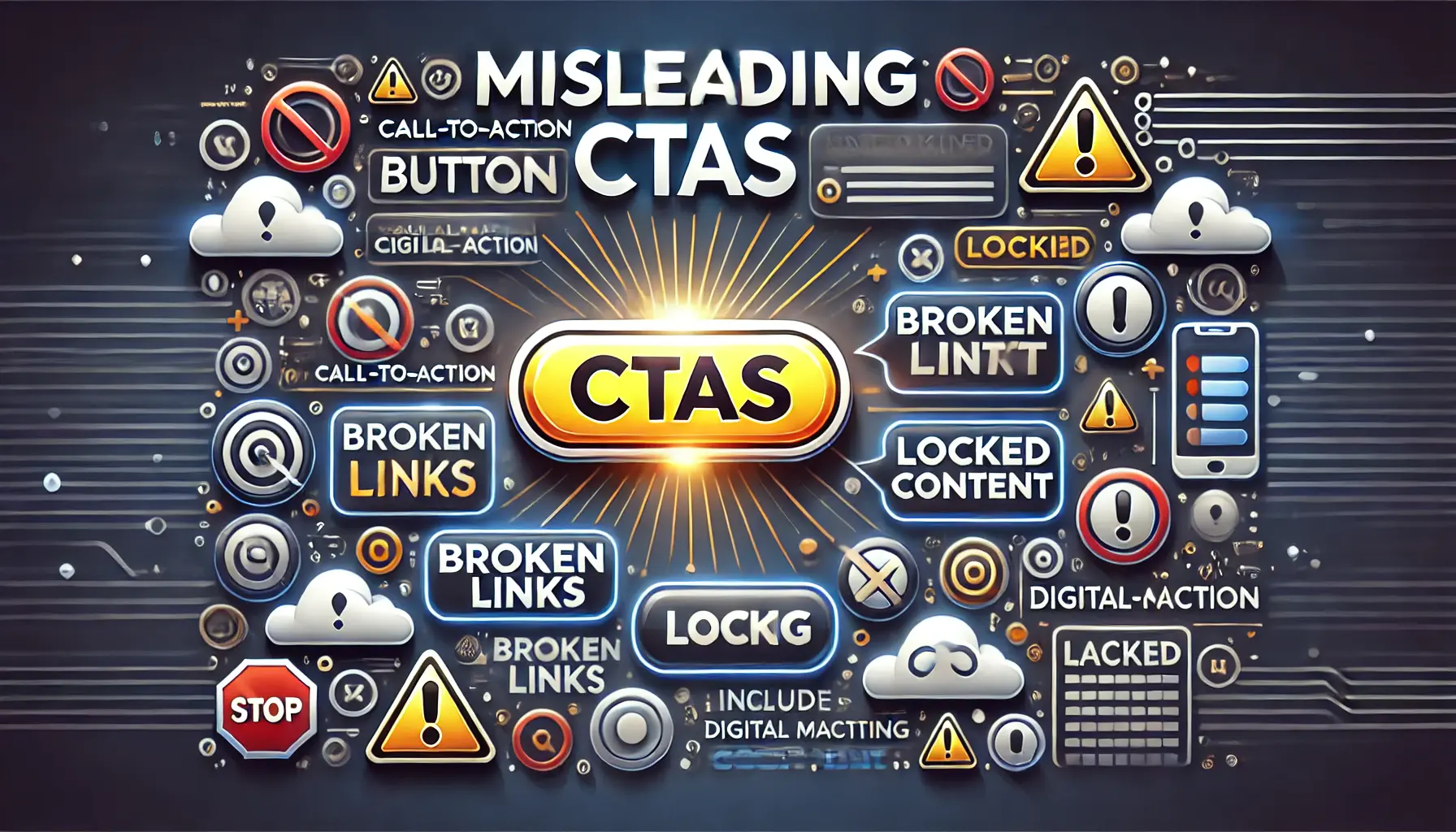
A representation of the pitfalls of misleading CTAs in digital marketing.
5. Misleading CTAs
Using deceptive CTAs that do not match the content of the landing page undermines your brand’s credibility and leads to high bounce rates.
Make sure whatever promise your CTA makes is consistent with what users see after they click through.
For example, if your CTA promises a free e-book, the landing page should immediately provide that e-book with no surprise requirements.
By avoiding these common mistakes, you can improve the effectiveness of your CTAs, leading to better user engagement and higher conversion rates in display ad campaigns.
- Avoid vague text like ‘Click Here.’
- Ensure visibility with contrasting colors and proper placement.
- Limit CTAs to reduce confusion and enhance user focus.

A visual representation of measuring CTA performance in digital display ads.
Measuring the Success of Your CTAs in Display Ads
Evaluating the effectiveness of your calls-to-action (CTAs) in display ads is essential for optimizing campaign performance.
By analyzing key metrics, you can gain insights into user engagement and make informed decisions to enhance your advertising strategy.
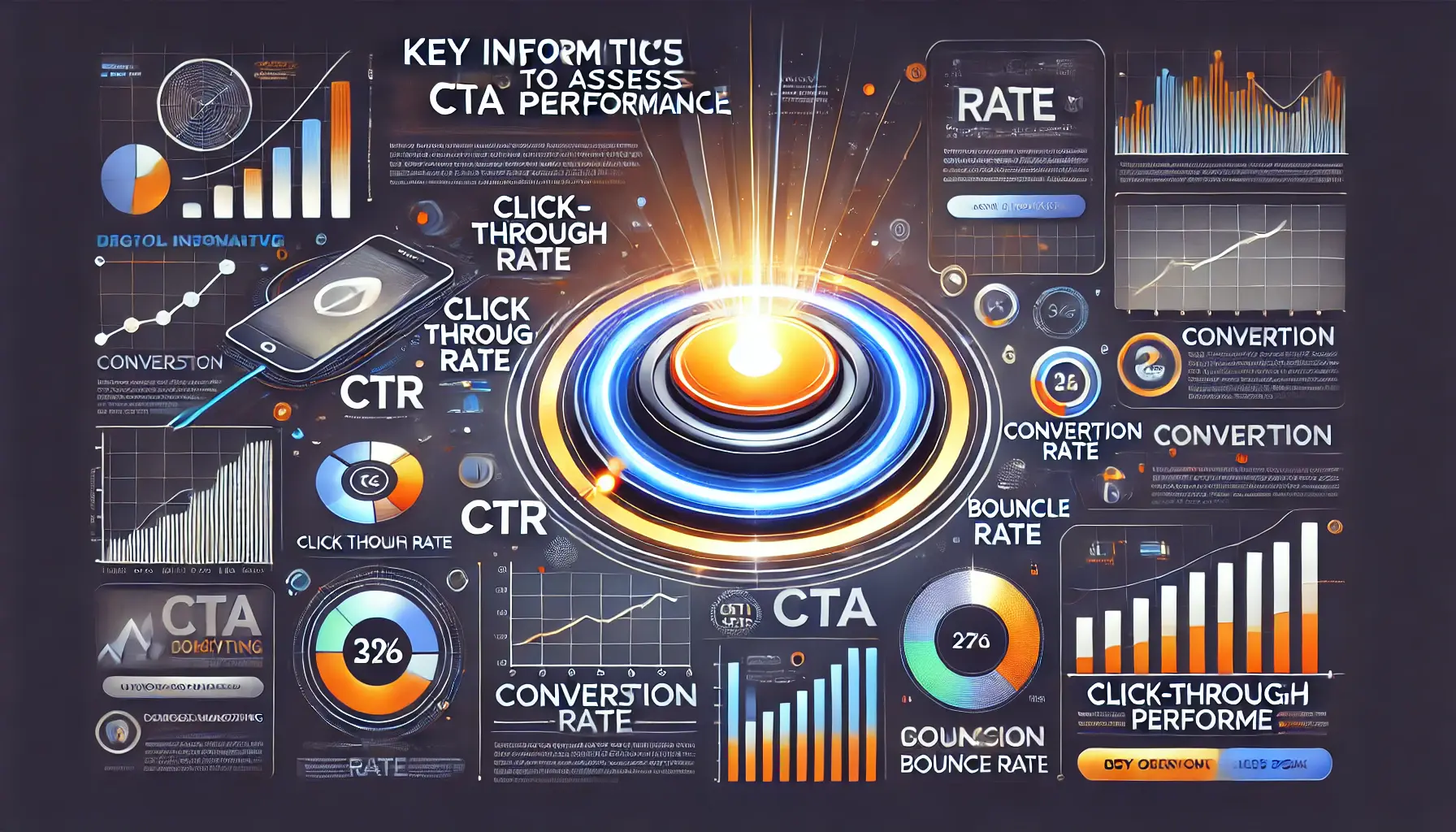
A visual representation of key metrics for assessing CTA performance in digital marketing.
Key Metrics to Assess CTA Performance
Several metrics are instrumental in measuring the success of your CTAs:
- Click-Through Rate (CTR): This metric refers to the percentage of users who clicked on your call-to-action out of the total number of views. A high CTR means that your CTA is attention-grabbing and relevant for the audience.
- Conversion Rate: This shows the percentage of users who, after clicking the CTA, completed a desired action, whether it was to make a purchase or subscribe to a newsletter. It tells how effective your CTA is in generating real user actions.
- Bounce Rate: This indicates the percentage of users who, after clicking on the CTA, left the landing page without navigating further. A high bounce rate may suggest inconsistency between your call-to-action and the target content on its landing page.
- View-Through Rate (VTR): This measures the number of users who view your ad and later visit your website without directly clicking on the ad. It helps assess the ad’s indirect impact on driving traffic.
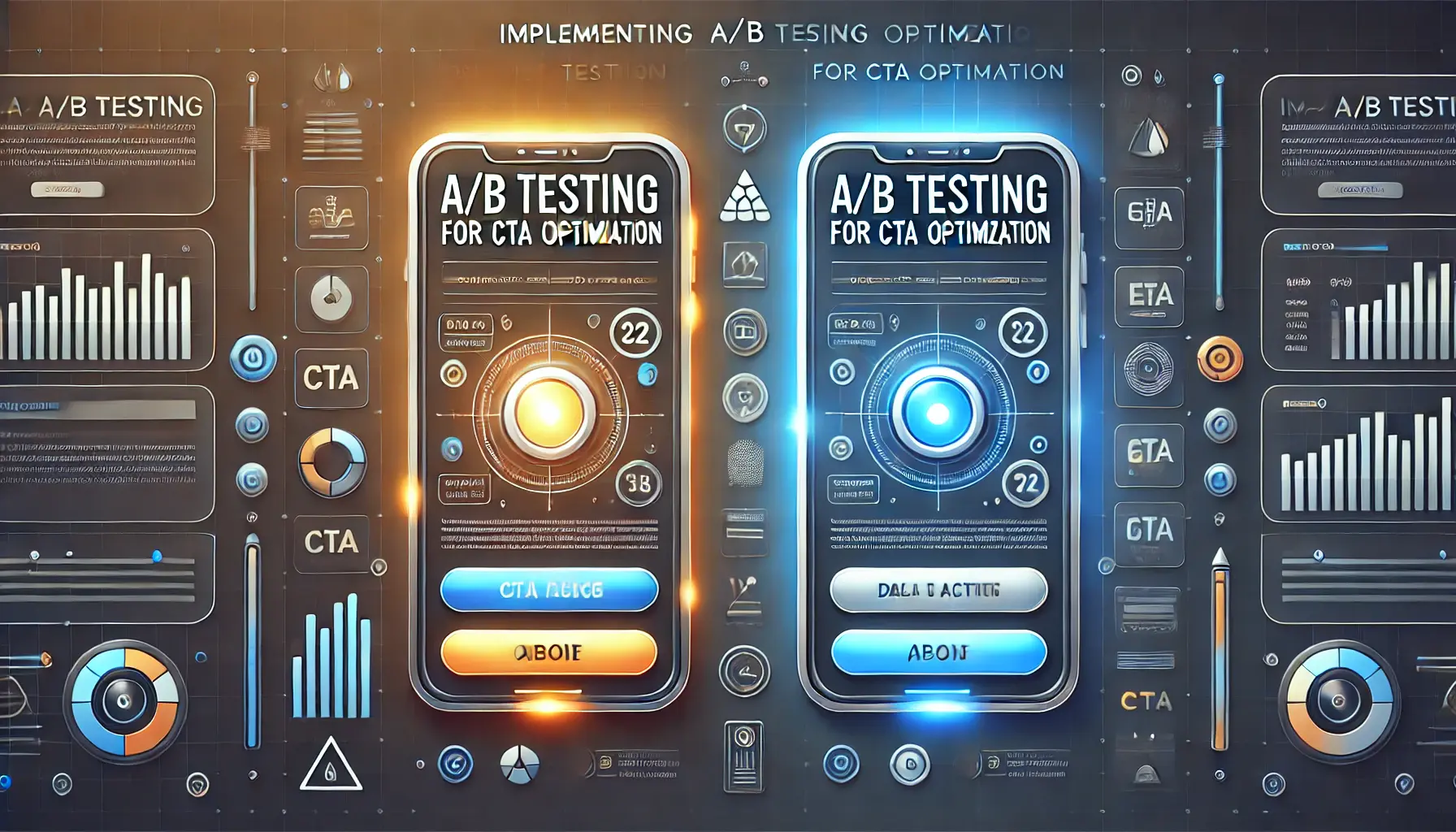
A visual representation of A/B testing for optimizing call-to-action buttons in digital ads.
Implementing A/B Testing for CTA Optimization
A/B testing involves running various versions of your CTA to see which works best.
By making variations in text, color, and placement, you can identify the most effective option.
The main steps include:
- Create Variations: Make different versions of your CTA, changing only one variable at a time to pinpoint its effect accurately.
- Distribute Evenly: Show each version to a comparable segment of your target audience to ensure fair and accurate results.
- Analyze Results: Compare performance metrics to identify which CTA variant yields the highest engagement and conversion rates.
Regularly conducting A/B tests allows for continuous improvement of your CTAs, ensuring they remain effective and aligned with audience preferences.

A visual representation of utilizing analytics tools to gain deep insights into CTA performance.
Utilizing Analytics Tools for In-Depth Insights
Leveraging analytics platforms can provide comprehensive data on your CTA performance.
Consider the following tools:
- Google Analytics: Offers detailed reports on user behavior, including CTR and conversion tracking.
- Heatmap Tools: Visualize user interactions with your ad, highlighting areas of interest and potential improvement.
- Campaign-Specific Dashboards: Platforms like Google Ads provide real-time data on ad performance metrics, enabling prompt adjustments.
By regularly measuring and analyzing these metrics, you can fine-tune your CTAs for better user engagement and achieve your marketing goals effectively.
Tracking metrics like Click-Through Rate (CTRClick-Through Rate, the percentage of users who click on a link out of the total number of viewers.) and Conversion RateThe percentage of users who complete a desired action after clicking on an ad. is essential for evaluating and optimizing CTA effectiveness.
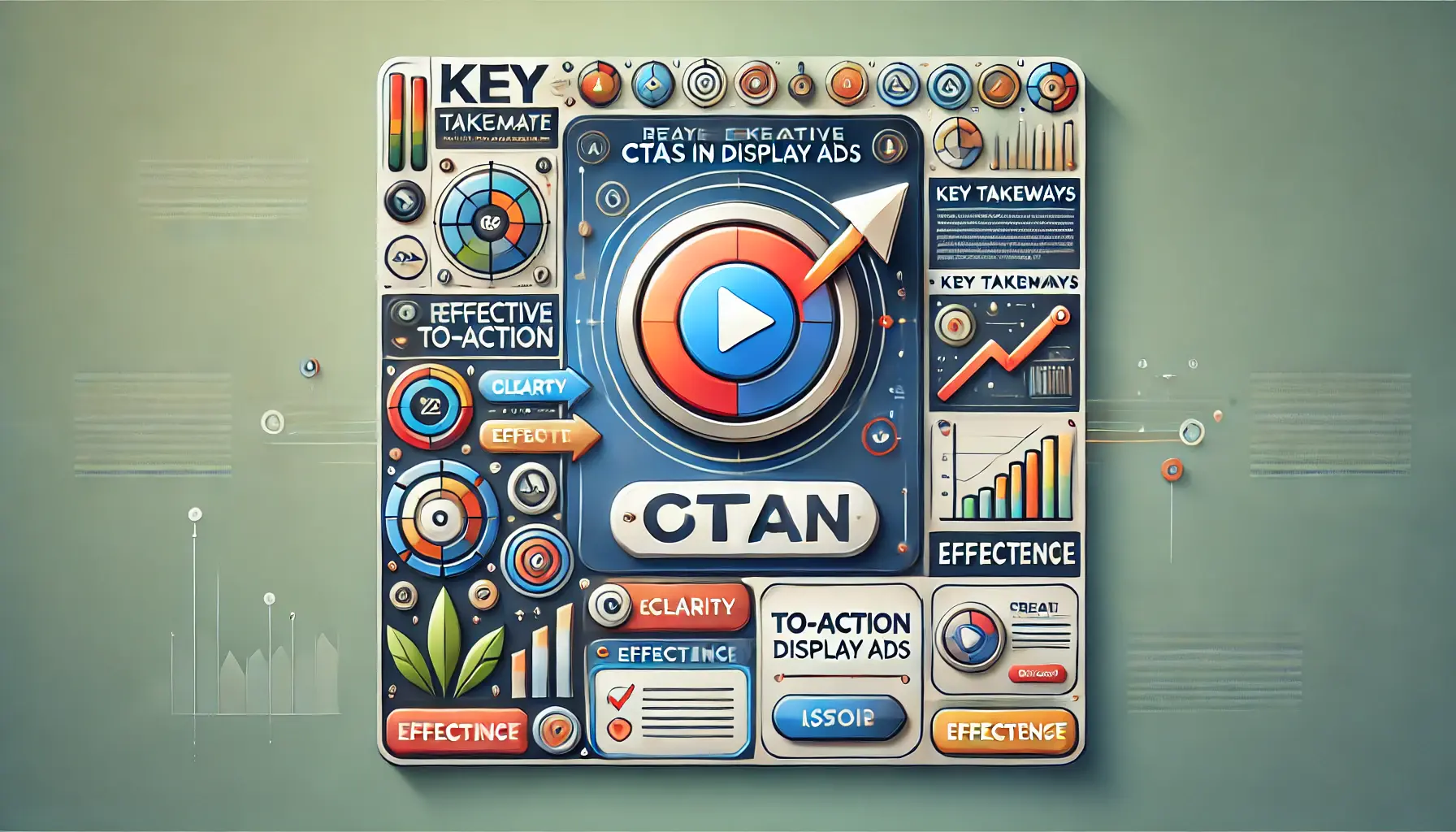
A visual representation of key takeaways for designing effective CTAs in display ads.
Key Takeaways for Creating Effective CTAs in Display Ads
Crafting an effective call-to-action (CTA) is a vital element of successful display advertising.
Throughout this article, we’ve explored the essential components of impactful CTAs, common mistakes to avoid, and strategies to measure their success.
Here’s a comprehensive summary to guide your efforts in creating CTAs that deliver results.
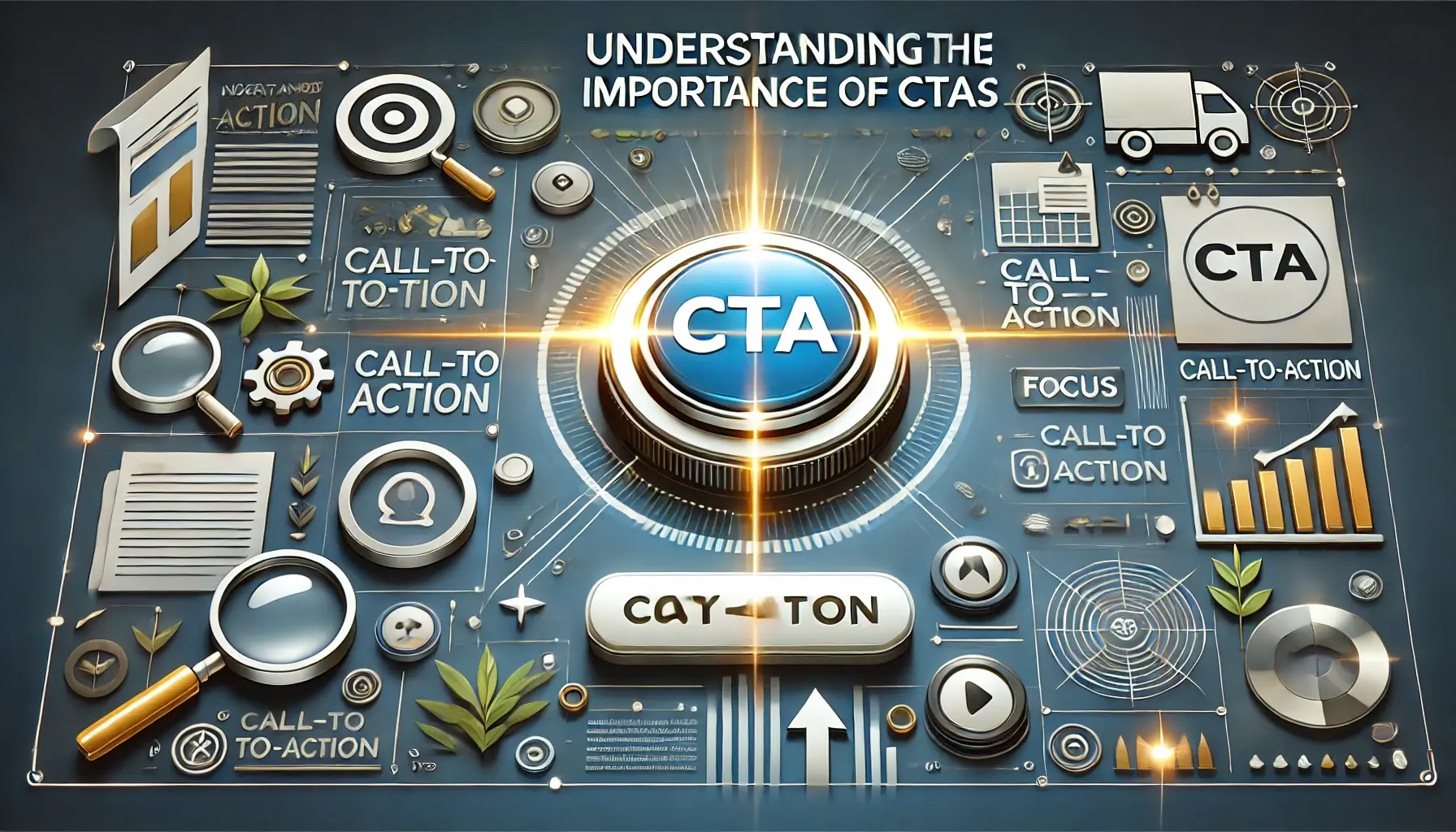
A visual representation of the critical role of CTAs in driving user action and engagement.
Understanding the Importance of CTAs
CTAs are more than just clickable buttons; they are the driving force behind user engagement.
A well-designed CTA can turn casual viewers into active participants, whether through clicking a link, signing up, or making a purchase.
It bridges the gap between attention and action, making it indispensable in any display ad campaign.

A visual representation of the core elements that make a CTA effective in digital marketing.
Essential Elements of Effective CTAs
Effective CTAs share certain characteristics that make them compelling and action-oriented:
- Clarity: Use direct and simple language that eliminates ambiguity.
- Urgency: Incorporate time-sensitive phrases like “Act Now” or “Limited Time Offer.”
- Relevance: Ensure your CTA aligns with the audience’s needs and expectations.
- Value: Clearly highlight the benefit or incentive for taking action.
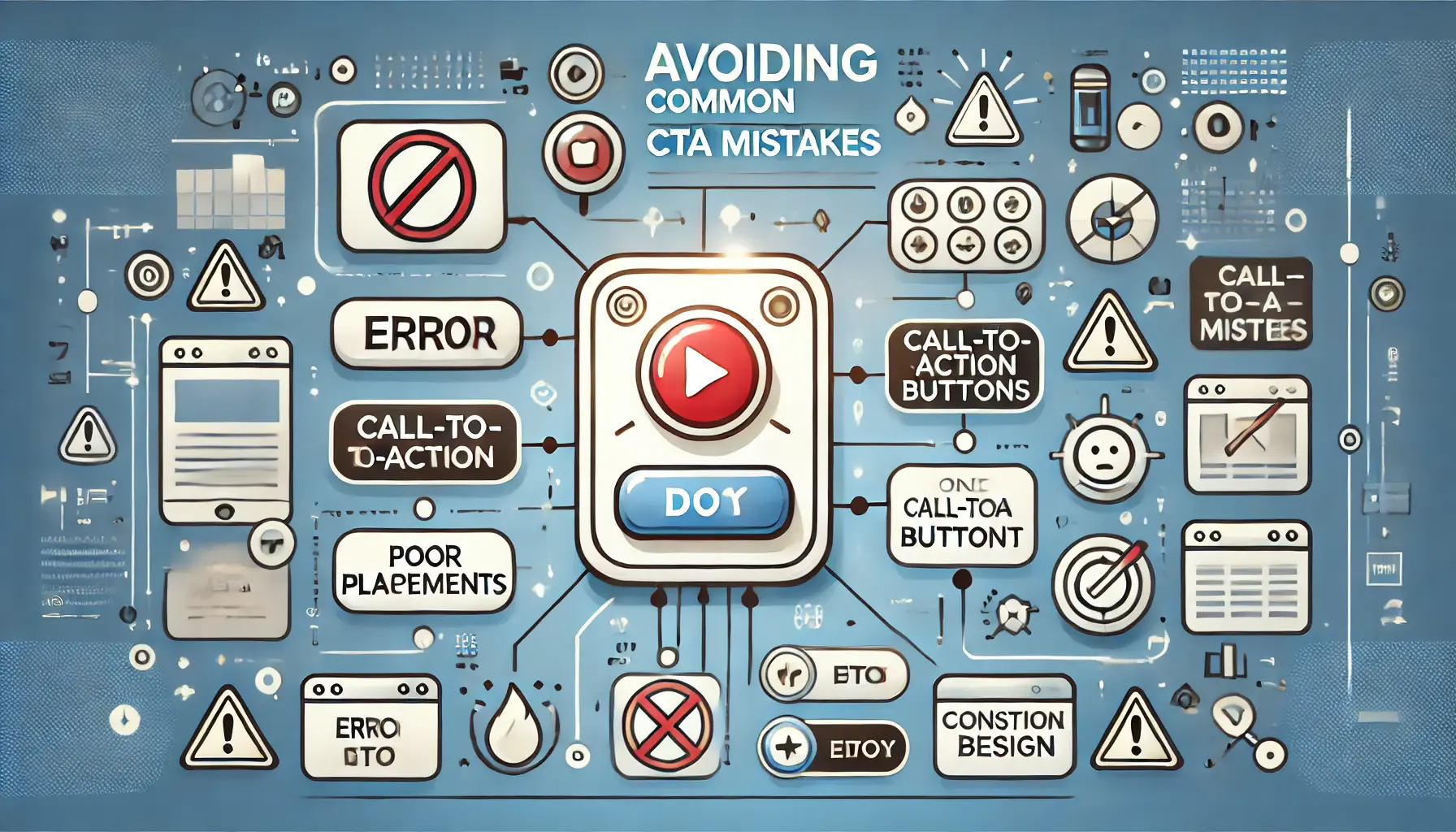
A visual representation of common mistakes in CTA design and how to avoid them.
Avoiding Common CTA Mistakes
Designing CTAs effectively also means steering clear of common pitfalls:
- Avoid using unclear, non-descriptive phrases like “Click Here,” which don’t suggest anything about the purpose.
- Make sure your CTA is visually predominant and easily findable in the ad.
- Limit the number of CTAs in a single ad to avoid overwhelming the user.
- Optimize CTAs for mobile to ensure smooth interactions across all devices.
- Maintain consistency between the CTA and the actual content of the landing page to establish trust.
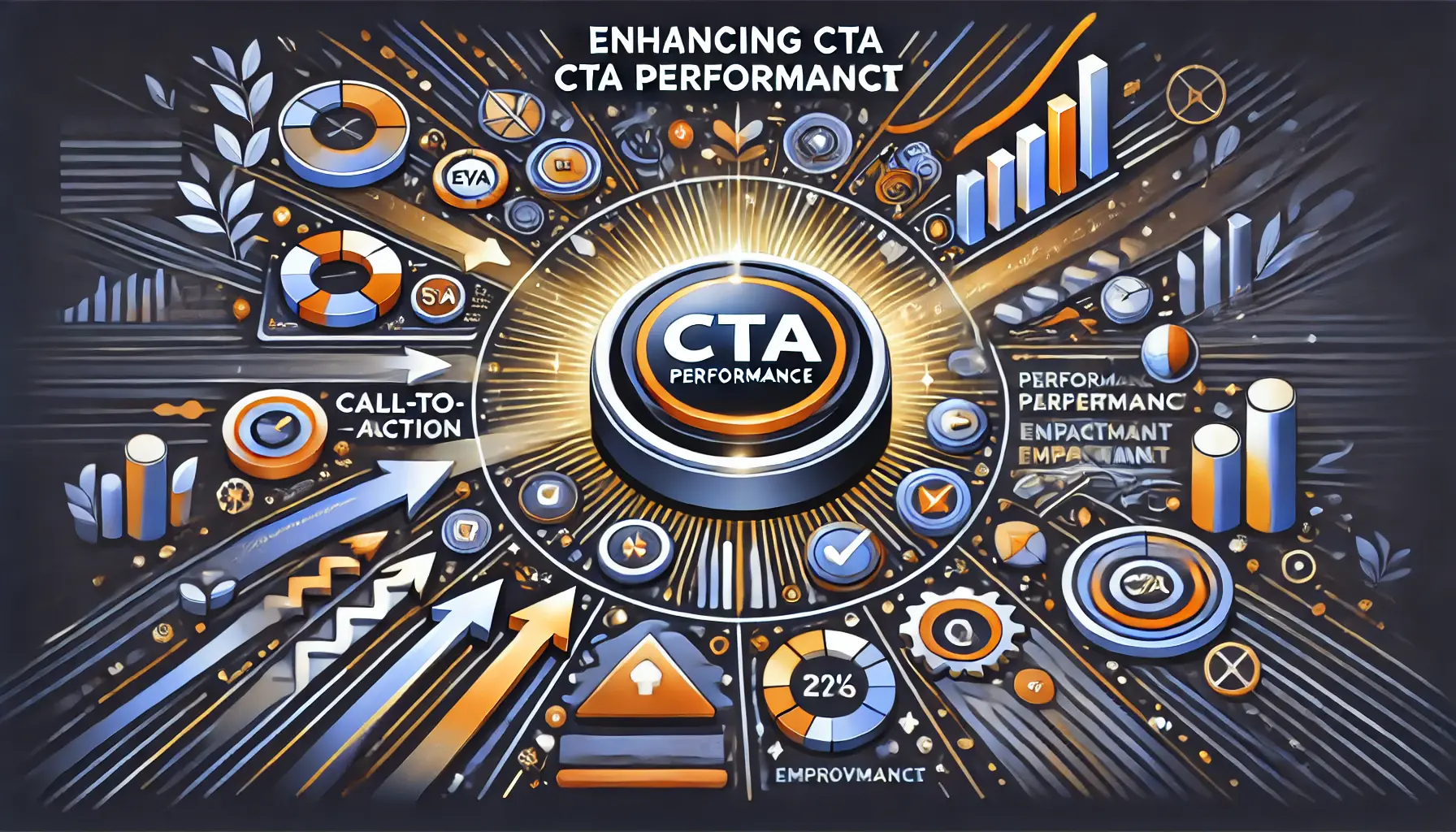
A visual representation of strategies for enhancing CTA performance in digital marketing.
Enhancing CTA Performance
To maximize the effectiveness of your CTAs, focus on continuous improvement through data-driven strategies:
- Track metrics such as Click-Through Rate (CTR), Conversion Rate, and Bounce Rate to assess performance.
- Conduct A/B testing to experiment with different designs and identify the most effective approach.
- Leverage analytics tools like Google Analytics and heatmaps to gain deeper insights into user behavior.

A visual representation of reflection and conclusion in the context of digital marketing strategies.
Final Thoughts
The best CTAs form the core of any display ad, driving users to take action and complete the campaign objectives.
Pay attention to clear messaging, strategic design, and ongoing optimization to ensure your CTAs stand out and inspire meaningful action.
Remember, success depends on understanding your audience, testing different strategies, and refining your approach based on measurable insights.
With these insights, you are well-equipped to create CTAs that elevate your display advertising and drive effective results.
Clear messaging, strategic design, and continuous optimization are key to crafting impactful CTAs that drive results.

A visual representation of the process of seeking answers to frequently asked questions about CTAs in digital ads.
Your campaigns can be managed by an agency specialized in Google Ads, check out our service page.
Frequently Asked Questions about Effective CTAs in Display Ads
Understanding the nuances of crafting compelling calls-to-action (CTAs) in display advertising is essential for enhancing user engagement and driving conversions.
Here are some common questions and concise answers to guide you:
A CTA is a prompt in display ads that encourages users to take a specific action, such as ‘Buy Now’ or ‘Learn More.’
CTAs help direct users to desired actions, increasing engagement and conversion rates in advertising campaigns.
Utilize clear, action-oriented language, create urgency, ensure visibility, and align the CTA with user needs.
Place the CTA in a prominent position, above the fold, where it is immediately visible to users.
Use contrasting colors to the background of the ad for the CTA so that it stands out.
Stick to one main CTA per ad to avoid overwhelming users and losing a clear message.
Yes, A/B testingA method of comparing two variations to determine which performs better. using different variations of CTAs will help determine which one works better.
Analyze metrics such as click-through rates (CTR) and conversion rates to assess CTA performance.
Of course, customized CTAs in retargeting ads help you get the attention of users who have already shown interest in your brand.
